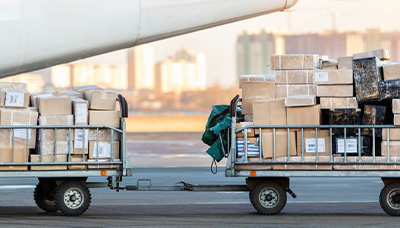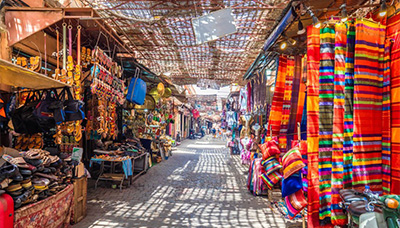
C-TPAT Audit
All-Inclusive – Inspection Service All Over China
The Most Important Things You Should Know About CTPAT Audit and Requirements
Through a CTPAT audit, the Customs-Trade Partnership Against Terrorism (CTPAT), a voluntary support program run by US Customs and Border Protection (CBP), aims to increase the security of supply chains for private companies. All participants in this program agree to safeguard their supply chains from terrorists’ hiding places for weapons of mass destruction.
However, you must be aware of the important guidelines if you want to fulfill the CTPAT requirement and receive a certificate. We go over all the information you need to know about CTPAT certification, rules, and the procedure as a whole in this guide.
C TPAT: What Is It?
In response to the New York terrorist attacks of September 11, C TPAT was created in November 2001. It is a voluntary incentive-based program where partners collaborate with members of the trade community to improve supply chain security globally and guard against terrorist organizations compromising the supply chain.
Importers, exporters, third-party logistics providers, consolidators, air carriers, cross-border highway carriers, marine port authorities, ocean carriers, rail carriers, terminal operators, and customs brokers are just a few of the businesses that can join C TPAT.
What Requirements Apply to C TPAT?
The C-TPAT requirements are a set of specifications given to US Customs and Border Protection (CBP) by that organization. They are made to assist businesses in comprehending what they must do to adhere to the CTPAT program.
Checklist of C-TPAT Requirements
The following CTPAT compliance checklist must be followed by importers in order for them to be eligible to join CTPAT.
- being a current importer or a non-resident Canadian importer who brought products into the US in the last 12 months.
- possess a valid US importer of record (IOR) number
- and possess a valid continuous bond that has been registered with Customs and Border Protection.
- run a business in the US or Canada with staff members.
- As the primary cargo officer in charge of C TPAT, a company officer should be chosen.
- Ensure that you uphold the C TPAT supply chain security standards described in the C TPAT Importer Agreement.
- Fill out the C TPAT portal’s supply chain security profile and specify how it will evolve.
- possess no outstanding balance due to CBP at the time of application.
How Does C TPAT Compliance Work?
It’s critical that your company has all the necessary paperwork in order to comply with CTPAT.
Personnel CTPAT Documentation
It is required that you sign a contract with employment agencies that covers background checks from the DMV, FBI, and export control. You must keep a copy as evidence that the screening procedure was carried out at your company and as proof of that.
Information on CTPAT for Business Partners
Your customer database, vendor/supplier database, transactional partners, and service providers must all be reviewed and screened for potential business partners. Your foreign suppliers must also complete the CTPAT questionnaire, submit it to you, note any weaknesses, develop an improvement strategy, and keep all related paperwork.
Documentation for Carriers under CTPAT
You must obtain and hold the CTPAT certificate if you are a carrier. Maintaining your own files demonstrates diligence, which is crucial when validating your C TPAT status.
You can use your C TPAT manual in conjunction with any technology control plans you might have for export control when it comes to IT and technology access. To prevent giving any controlled technology to people with permission, you must keep all paperwork, including a wide-aisle tour plan. To make sure that all procedures are in place and being followed, it is essential to keep records of internal audits and reviews.
Regarding physical access, you should keep card swipe records close to your CTPAT records, pictures of security and barriers, copies of truck driver’s licenses, videos of validation of those granted access to your facilities, and visitor procedures, all of which should be kept sealed in containers.
Which Advantages Come With CTPAT?
The CTPAT program is a voluntary support program, as was already mentioned. However, there are many advantages to joining this program, and these advantages can aid your company in overcoming a variety of obstacles.
The CTPAT program offers the following advantages:
- participating actively in the fight against terrorism.
- a decrease in CBP inspections.
- CBP inspections should receive priority treatment.
- a requirement for attending C TPAT training lectures.
- Participation in the program for importers’ self-evaluation is necessary.
- In some situations, penalties may be reduced.
- A supply chain expert and a security consultant have been assigned.
- Importers in Tier III are permitted to apply for block designation under the DHS Safety Act.
- Exporters who consent to CBP sharing their information with other customer agencies enjoy fewer inspections when they land in some nations.
- FAST lanes are available at several land borders, including those in Michigan, New York, and Washington, as well as at southern border ports from California to Texas.

How Can I Obtain CTPAT Certification for My Company?
C TPAT is a voluntary program, and enrollment and receipt of certification are free. Additionally, a company can apply to the program and work directly with CBP without the help of an intermediary.
It’s simple to apply and become CTPAT certified, and you can do it online. A business must first check the C TPAT Minimum Security Criteria to see if it qualifies for the program. Second, the business must agree to participate and submit the application through the C TPAT Portal.
The third requirement is for the company to complete a supply chain security profile, which outlines how the company currently complies with C TPAT’s security requirements. Consequently, a risk assessment is also required. Finally, the C TPAT program has up to 90 days to accept or reject the application before certifying the company. Within a year of certification, the business will have its certification validated. Your company has been authorized and meets CTPAT’s minimum security requirements if it has received the CTPAT certification.
Describe the CTPAT audit
A CTPAT audit evaluates the current state of your supply chain security on a risk-based basis. You can strengthen the security of your supply chain with the help of the audit, which will also determine whether you are CTPAT compliant. Typically, it includes the key components of supply chain security, such as:
- Crucial Items
- Container Protection
- Physical Protection
- Technologies of information
- Transport Security
- Limitations on Physical Access
- Regulatory Security
- Threat awareness and security education
You will receive a final report from the third party after the supply chain audit is finished that will give you a detailed understanding of the advantages and disadvantages of your supply chain security. This report includes a strategy for dealing with any flaws as well as a course of corrective action.
Conclusion: Key Information Regarding C TPAT Audit and Requirements
The US Customs and Border Protection (CBP) is in charge of the CTPAT, which is a voluntary support program. It was created in response to the terrorist attacks of September 11 and is dedicated to enhancing supply chain security globally.








